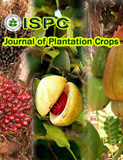Bioreduction of gold metal to nanoparticles by tea (Camellia sinensis) plant extracts
Abstract
Tremendous health benefits of the chemical cocktails present within the tea plant may also possess reduction potential, which will reduce gold salts into gold nanoparticles for the potential medical and technological applications. Reduction of gold salts using toxic chemicals cause problem in the environment. As the nano-revolution progresses, demand for environmentally benign and biologically friendly green synthesis process will rise. We present an approach to produce gold nanoparticles using aqueous extract from different parts of tea plant. Gold metal in this phytochemically induced reduction leads to generation of nanoparticles with definite shape and properties. Various phytochemicals present in tea plant extract provided robust coating and stabilized the synthesized nanoparticles. Reduction of gold salts by the tea plant extracts paves the way for plenty of opportunities for their application in imaging and therapy of serious disease like cancer. Surface plasmon resonance (SPR) bands observed in the gold nanoparticles solution at 540 nm indicated spherical nanoparticles formation. The morphology and size of gold nanoparticles were also determined by transmission electron microscopic (TEM) images. Under TEM, spherical nanoparticles with size ranges from 11 nm to 40 nm were observed. The potential application of gold nanoparticles synthesized using the principles of green chemistry has been discussed.







 .
.